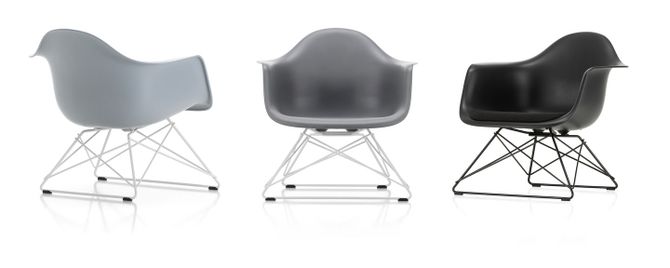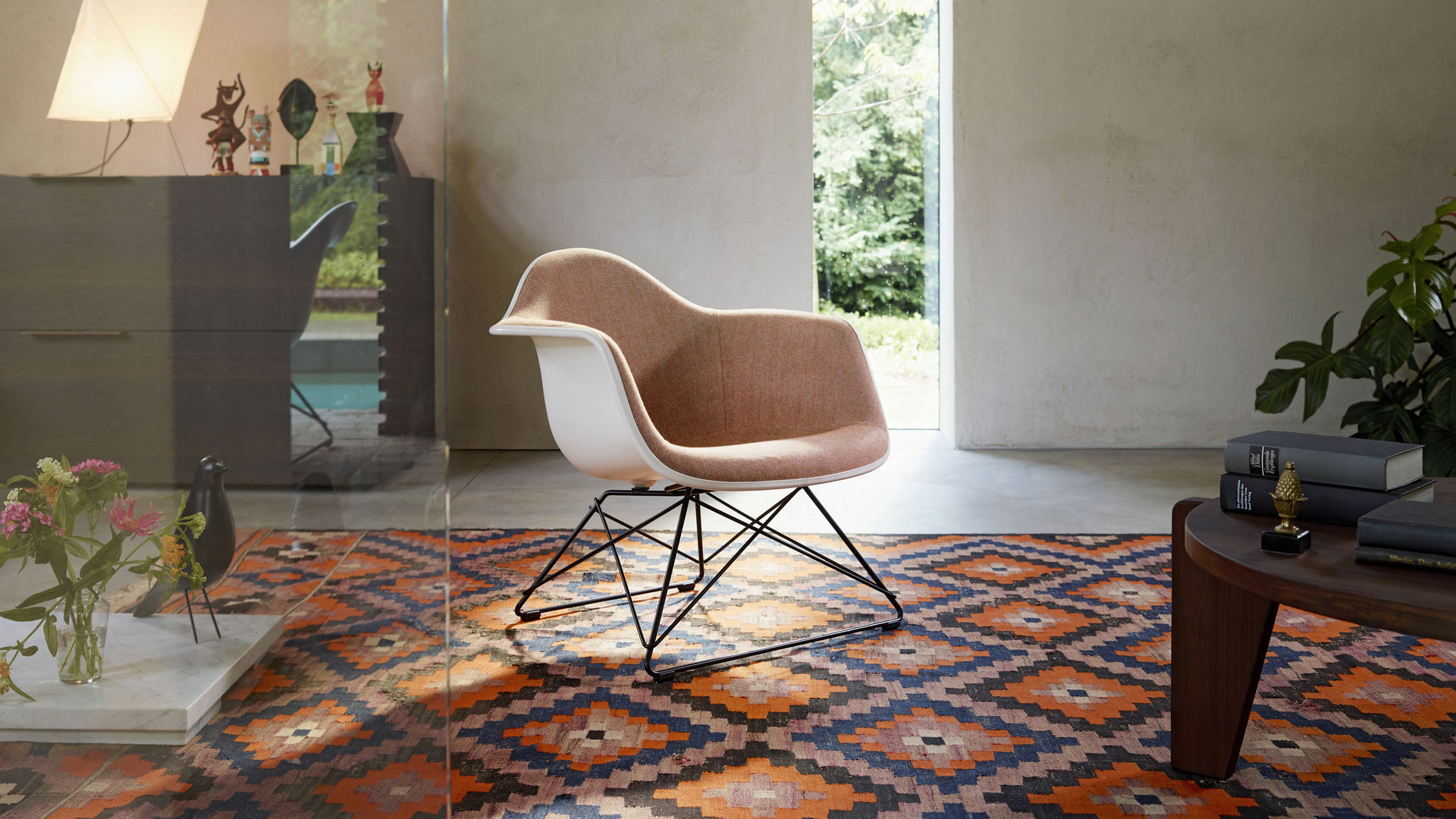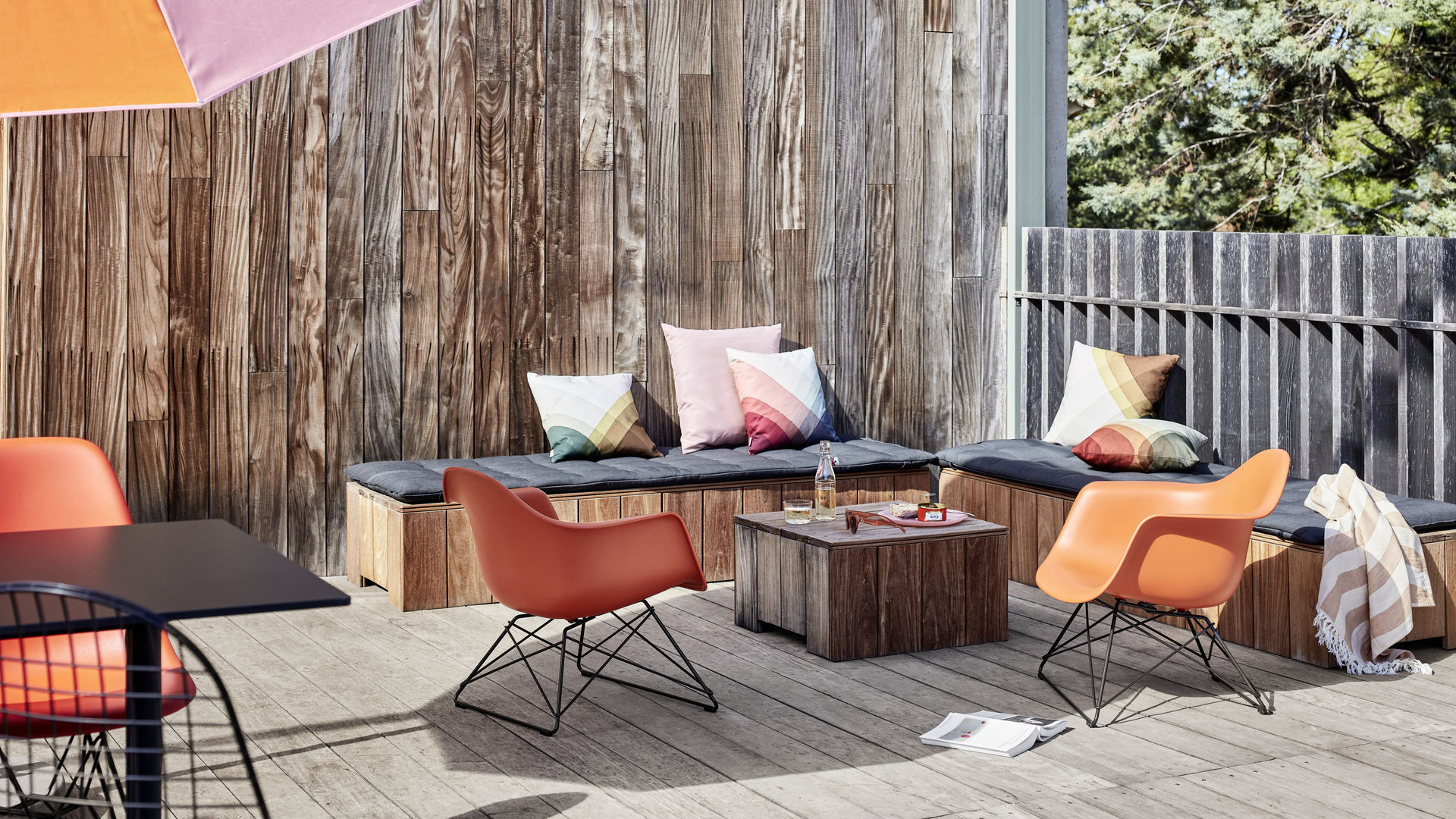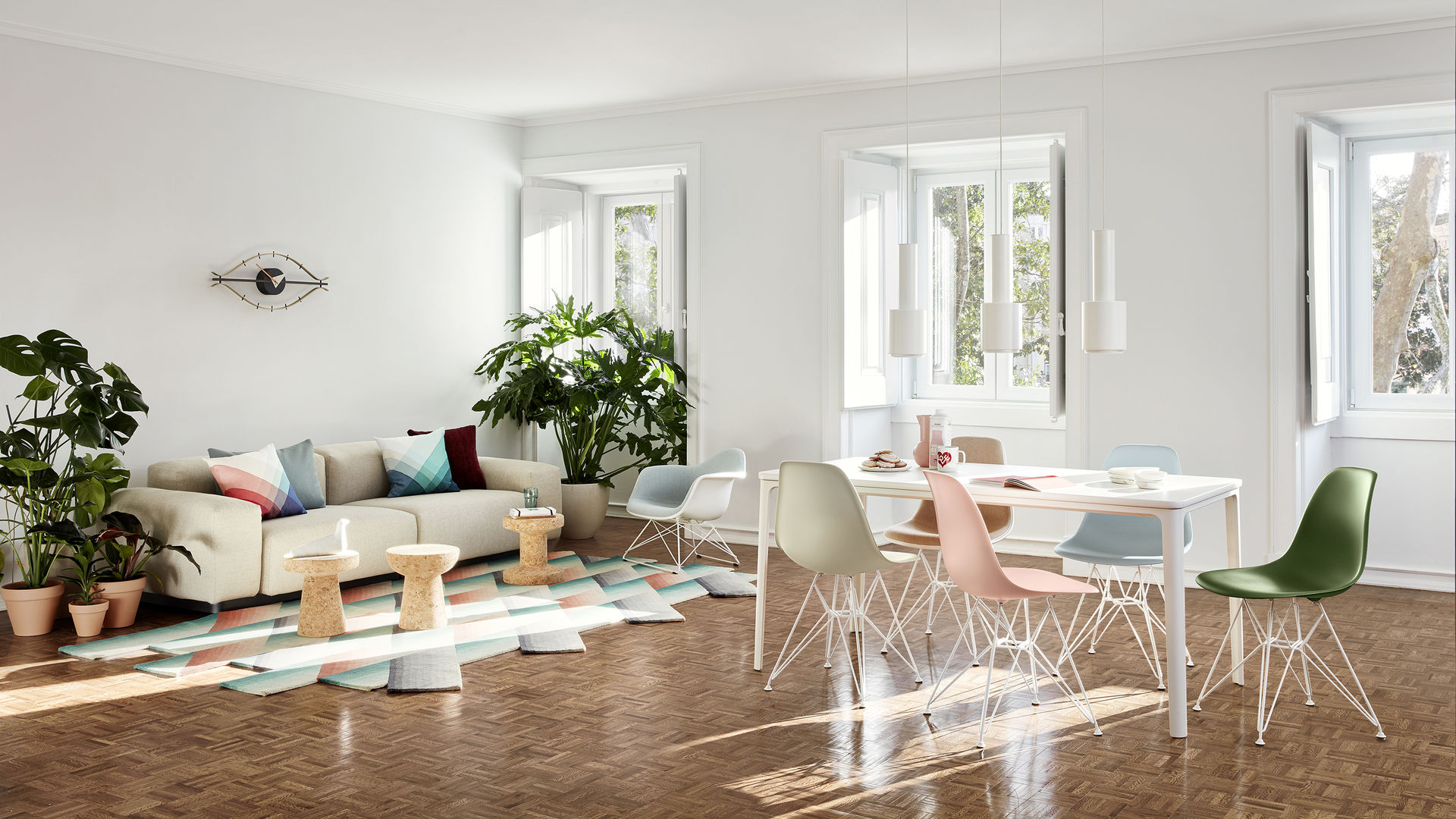
Eames Plastic Armchair RE LAR
Charles & Ray Eames, 1950
With the debut of their Plastic Chairs, Charles and Ray Eames introduced a new furniture typology that has since spread around the globe: the multifunctional chair whose shell can be joined with a variety of different bases. Already in 1950, they presented a series of bases that enabled various sitting positions, including the low-slung LAR (Lounge Height Armchair Rod Base).
The LAR seems to have been one of Charles and Ray's favourite designs: vintage photographs show it in numerous locations throughout the legendary Eames House in Pacific Palisades – both indoors and out. This also reveals how lightweight the chair is, and how easily it can be moved around.
Thanks to its compact dimensions, the Plastic Chair RE LAR can also be used in smaller interiors, and the wide choice of colours for the shell, today manufactured by Vitra in post-consumer recycled plastic, as well as for the upholstery fabric and base ensure that the chair is suited to diverse interior styles and settings. The steel wire base, which achieves maximum stability with minimum materials, acquired a charming nickname within just a short time on the market as a result of its unusual form: 'Cat's Cradle' – in reference to the children's string game.
Due to the organic shape of this classic armchair, the LAR is a striking solo piece, but it can also be paired with many types of sofas to create an appealing contrast. Especially in the version with full upholstery, the LAR offers long-lasting comfort, making this modestly sized armchair an excellent seating option for any living space.
Information
- Seat shell: dyed-through, recycled polypropylene, 100% recyclable. All models are available with a seat cushion (screwed to the seat shell) or full upholstery, both made of recyclable polyurethane foam 'V-Foam'. The fully upholstered version has moulded polyurethane foam padding covered in fabric, attached to the shell with a welted edge. Different shell and upholstery colours and various bases provide a multitude of possible combinations.
- Note: due to the composition of the recycled material, the seat shell colours exhibit very subtle specks of pigment.
- Options: the Eames Plastic Chair RE is available as a visitor chair, dining chair, rocking chair, swivel chair or in stacking versions and with ganging brackets for row seating. Beam-mounted shells are suited for use in waiting areas.
- Base: wire base with cross struts, chrome-plated or powder-coated finish. Seat height 256 mm. (LAR = Lounge Height Armchair Rod Base)
- Outdoor use: unupholstered version with powder-coated base suitable for utilisation outdoors on a temporary or seasonal basis, following care instructions. After prolonged exposure to the elements, clean and store away in a dry, sheltered place to ensure lasting use and avoid any deterioration in appearance.
Vitra Community
Do you have pictures that you’d like to share with us and the Vitra Community? Just add the hashtag #yesvitra to your photos and mentioning us as @Vitra, so we know it’s okay for us to share them.
10 year manufacturer’s warranty for selected products
Eames Plastic Chairs RE




The most of the best to the greatest number of people for the least. with these words, Charles and Ray Eames described one of their main goals as furniture designers. The design that most fully embodied this ideal was the Plastic Chair. For years, the designer couple explored the fundamental idea of a one-piece seat shell moulded to fit the contours of the human body. After their experiments with plywood and sheet aluminium in the 1940s yielded unsatisfactory results, the designers turned to alternative materials which led them to glass-fibre reinforced polyester resin. The Eameses recognised the potential and explored the advantages of the material - mouldability, rigidity, pleasant tactile qualities and suitability for industrial manufacturing methods. With this material, which was previously unknown in the furniture industry, they successfully developed the shell design for serial production. After their 1948 debut at the Museum of Modern Art's 'Low-Cost Furniture Design' competition, the Plastic Armchair (A-shell) and Plastic Side Chair (S-shell) were introduced to the market in 1950 as the very first mass-produced plastic chairs in the history of furniture. The Eames Plastic Chairs also introduced a new furniture typology that has since become widespread: the multifunctional chair whose shell can be joined with a variety of different bases to serve diverse purposes. As early as 1950, Charles and Ray Eames presented a series of bases that enabled various sitting positions. Over the years and in ongoing consultation with the Eames family, Vitra has introduced more sustainable materials for the seat shells of the Eames Shell Chairs. Since 2024 the shells of the Eames Plastic Chairs have been made from recycled plastic and the chair family is now called Eames Plastic Chair RE. The high-quality recycled material stems from household recycling, particularly used packaging, obtained through the 'Yellow Bag' (Gelber Sack) collection programme in Germany. Utilising this raw material instead of petroleum-based primary plastics generates fewer climate-damaging emissions and consumes significantly less energy. Due to the composition of the recycled material, the various colour versions are interspersed with tiny specks of pigment. The colour white is being replaced by Cotton White RE, but is expected to remain available in virgin polypropylene until the end of 2025. Like the seat shells of Eames Plastic RE, the version in white is 100% recyclable at the end of its product life.
Charles & Ray Eames






Charles and Ray Eames are counted among the most important figures of twentieth-century design. Their work spans the fields of furniture design, filmmaking, photography and exhibition design. Vitra is the sole authorised manufacturer of Eames products for Europe and the Middle East. When you own an Eames product made by Vitra, you know it is an original.



























